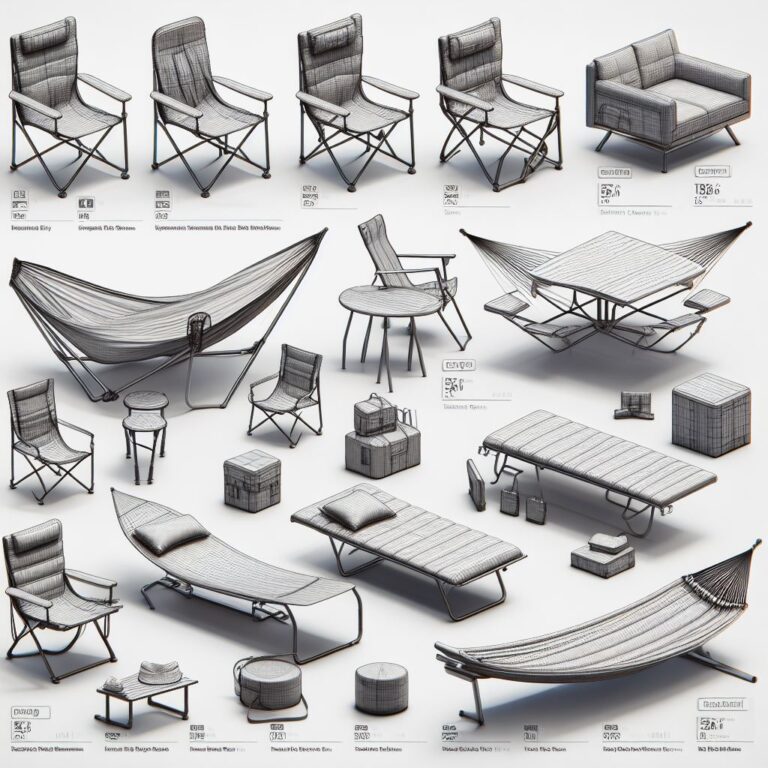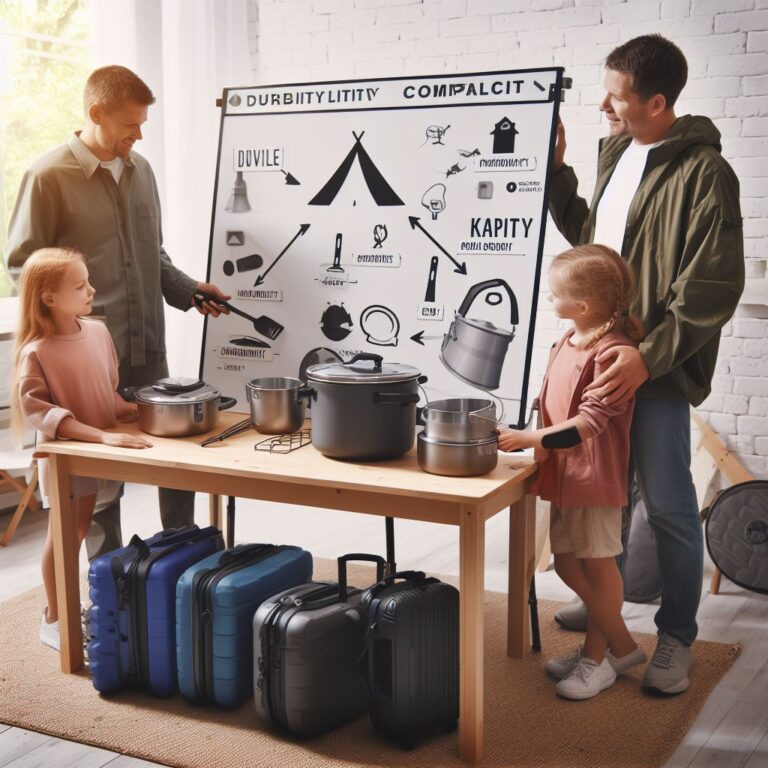Understanding the Importance of Lighting for Camping
Lighting plays a crucial role in the camping experience. A reliable light source not only contributes to the overall safety but also enhances the ease and comfort of the outdoor adventure. It aids navigation around the campsite after dark, helps with the preparation and cooking of meal, and serves as a necessary tool in times of emergency or unexpected situations. From highlighting potential hazards such as sharp objects or uneven terrain to scaring away unwanted wildlife, a good camping light can make nighttime in the wilderness significantly safer.
In addition to safety reasons, the right type of lighting can also transform the camping atmosphere, making it more pleasant and enjoyable. A gentle, warm light is perfect for cozy evenings spent chatting around the campfire, reading a book, or simply admiring the beauty of nature. Moreover, lighting can be practical for various camping activities such as fishing at night, exploring nearby areas, or when embarking on early morning hikes. Hence, choosing the appropriate camping lights, considering various factors, is integral to a successful camping expedition.
Different Types of Camping Lights and Lanterns
Camping lights and lanterns fall into several distinct categories, each designed to meet specific outdoor needs. The first broad category is battery-powered lights, which can be further divided into traditional flashlights, headlamps, and lanterns. Flashlights are best for individuals who need a concentrated beam of light to guide their path, while headlamps leave the hands free, ideal for tasks around the camp. Lanterns, on the other hand, provide 360 degrees of light, perfect for illuminating a campsite.
The second category includes fuel-based lights, often powered by propane, butane, or liquid fuel. These camping lights emit a high level of brightness, although they require careful handling due to the inherent risk of fire. Solar-powered lights constitute the third category, offering an eco-friendly alternative that harnesses natural sunlight to generate illumination. It’s important to note that their efficiency is dependent on weather conditions. Lastly, hand-cranked camping lights are energy-efficient options that require manual effort for operation, proving advantageous in situations where other power sources may not be readily available.
Features to Consider While Buying Camping Lights
Choosing the perfect set of camping lights requires more than just picking the brightest option on the shelf. There are a variety of features to consider to ensure that the selected lights best fit your specific needs. Some crucial factors include the specific type of lighting device, the light output, the light source, battery life, among others. It is also imperative to take into consideration the weight and size of the light, especially if you plan on backpacking or hiking where every ounce matters.
Additionally, pay close attention to durability and weather resistance. Camping conditions can quickly change and having a camping light that can endure the elements is crucial. Nowadays, technological advancements have led to the introduction of numerous extra features such as remote control functionality, USB ports for charging devices, multi-color settings, etc. These features, while not essential, can significantly enhance your camping experience. Evaluate these features carefully to find the light that perfectly meets your camping needs.
Assessing the Brightness and Light Output
When considering the efficiency of a camping light, brightness plays an integral role. The key metric to inform you about the brightness of the light is lumens. Units of lumens determine the total amount of light emitted and can range from a modest 100 lumens for a simple flashlight to 1000 lumens for a commanding camping lantern. The choice of how many lumens is suitable for your camping light immensely depends on how you wish to use it. Tent lighting and reading would require lesser lumens than trail finding or cooking.
In addition to luminosity, the way your camping light dispenses its brightness or its light output is equally significant. A camping light with a focused beam or a spotlight function may have fewer lumens but can nonetheless still illuminate a long range due to its light directed in a single direction. Conversely, lantern-style lights are known for their wider, 360-degree light disbursement, making them ideal for lighting up the campsite, but they may perform poorly for those needing directed light. Distinguishing between these parameters before your purchase can make a noticeable difference to your outdoor adventure.
Considering the Light Source and Fuel Type
When planning a camping trip, the choice of light source can greatly impact the overall experience. Electric light sources, such as LED or incandescent bulbs, are typically the most user-friendly options. They are easy to use, safe, and offer high brightness levels. These options often feature different brightness settings, allowing for customization based on the task at hand, whether it be cooking, reading, or navigating through the night. Furthermore, electric lights don’t emit any odors or fumes, enhancing the outdoor experience.
On the other hand, fuel-powered lanterns, whether propane or liquid fuel, are known for their resilience and reliability, especially in colder climates where electric options may not perform as well. These types of lanterns usually offer a warm, ambient light which many campers appreciate. However, it is worth noting that fuel usage requires more care given the involvement of open flames and potential hazards associated with incorrect fuel handling. Therefore, when choosing the type of light source for your camping trip, consider factors like potential weather conditions, user safety, and personal preferences for ambiance and brightness.
Evaluating the Durability and Weather Resistance
When it comes to outdoor equipment like camping lights, durability ranks high on the list of crucial features. It’s imperative to have a device that can withstand frequent use, as well as accidental drops or bumps that are typical in the unpredictable outdoor environment. The material make-up of your light can give you a sense of its durability. Lights made from robust materials such as hardened plastic or metal tend to last longer and can withstand rough handle more effectively.
Moreover, weather resistance is another key factor to consider. After all, camping conditions are not always optimal, and you could find yourself dealing with rain, snow, mist, or high humidity. A camping light’s resistance to these elements can significantly influence its longevity and functionality. A high-quality camping light should have some level of water resistance, ideally with a high IPX rating. Be sure also to check that the unit is dust and dirt resistant, which ensures that it remains functional even in desert or beach environments. This peace of mind can make your outdoor venture less stressful and more enjoyable.
The Role of Weight and Size in Selection of Camping Lights
When choosing camping lights, it’s essential to factor in the weight and size of the units. A compact, lightweight design can enhance your camping experience, given that it doesn’t add to the burden of items you carry. Depending on the type of camping you are doing, you might have to hike long distances with all your camping gear on your back. In such situations, carrying a heavy or bulky camping light can be cumbersome and can drain your energy quicker.
Size is another significant aspect to consider. While a larger, more powerful light might seem like a good option, it can be impractical for backcountry campers carrying all their gear. However, if you’re car camping or don’t have to travel far from your vehicle, you might opt for larger and more feature-rich models. This all boils down to personal preference and camping style, but it is crucial to remember that the best camping light for you is one that combines optimal brightness, lasting battery life, and portability.
Importance of Battery Life in Camping Lights
When it comes to the selection of camping lights, the longevity of the battery emerges as a crucial factor. This is particularly important when you are planning a long camping trip or one without ready access to a power source. Choosing a light with an effective and efficient battery life can make a significant difference in your camping experience, ensuring that you have a reliable source of light in the darker hours of the day.
A camping light with an extended battery life not only provides consistent illumination but also adds to your safety and convenience. Upon evaluating the battery life, it’s worth considering rechargeable batteries. They are an excellent option for frequent campers as they save money in the long run and are a more environmentally friendly choice. Furthermore, many camping lights today offer a power-saving mode which can be a great way to maximize battery runtime. So, the ability of the camping light to run for an extended period can prove not just beneficial but essential for a successful camping adventure.
Additional Features: Remote Control, USB Ports, and More
One intriguing aspect of modern camping lights are the numerous additional features they come with that offer added comfort and flexibility for outdoor enthusiasts. A substantial number of camping lights now boast a remote control feature, a pronounced evolution from the basic on-off button or switch. With a remote control, one can conveniently operate the light without needing to rise out of the sleeping bag in the middle of the night. Furthermore, the remote control normally has a range that covers the average campsite, ensuring that the light can be controlled from anywhere within the camping vicinity.
Another beneficial feature that users are sure to appreciate is the inclusion of USB ports in the design of camping lights. This feature allows for charging of other devices, such as mobile phones and small appliances, using the lamp’s power source. This dual functionality adds value to the camping light as it could be the lifesaver when your device’s battery is depleted yet you still need to make an urgent call or navigate your way around. These additional amenities, while not absolutely necessary, can significantly enhance the experience of camping by providing convenience and promoting peace of mind.
Reviews and Recommendations: Top Camping Lights and Lanterns on the Market
Before landing on the right path in the dark wild, it’s crucial to explore trustworthy and efficient choices of camping lights. We have analyzed and identified a handful of top camping lights and lanterns in the market to make the selection easier for adventure enthusiasts. The Black Diamond Apollo Lantern stands out among others for its robust design, impressive light output, and durability, offering excellent service even in harsh weather conditions. Moreover, it includes a rechargeable battery and a USB port for device charging, making it an all-round winner for campsites.
Adding to the list, Coleman’s Northstar Propane Camping Lantern is a traditional-looking lamp that shines intensively, perfect for large groups camping in remote locations. A unique attribute of this lantern is its ignition push button for matchless lighting. The BioLite BaseLantern XL has also made it on the list for its compact size, multiple light modes, and extended battery life. Not to forget, it also has exceptional features such as a remote control and an integrated power bank. These recommendations are meticulously shortlisted, considering the key features that camping lights should ideally posses.
Why is having proper lighting important when camping?
Having the right type of lighting when camping is crucial for your safety and convenience. It enables you to see your surroundings clearly, prevents accidents, and helps in activities like cooking, reading, or finding your way around in the dark.
What are the different types of camping lights available on the market?
There are several types of camping lights available, including headlamps, flashlights, lanterns, and string lights. Each type has its own set of advantages and is suited for different camping needs.
Which features should I consider while buying camping lights?
Some important features to consider while buying camping lights are brightness and light output, the type of light source and fuel type, durability, weather resistance, weight, size, battery life, and additional features like remote control, USB ports, etc.
How can I assess the brightness and light output of camping lights?
The brightness and light output of camping lights are generally measured in lumens. High lumen output indicates a brighter light. However, brighter is not always better, as it may drain the battery life faster. Therefore, consider your specific camping needs while deciding on the brightness.
How does the light source and fuel type affect the performance of camping lights?
The light source and fuel type can greatly influence the performance of camping lights. For instance, LED lights are energy-efficient and durable, while gas-powered lanterns offer a warm and natural light. The choice depends on your preference and camping conditions.
Why is the durability and weather resistance of camping lights important?
Durability and weather resistance are important to ensure that your camping light can withstand outdoor conditions and last for several camping trips. Waterproof or weather-resistant camping lights are preferable as they can endure rain, snow, and other harsh weather conditions.
Why should I consider the weight and size of camping lights?
The weight and size of camping lights are important factors, especially for backpacking trips where you need to carry all your gear on your back. Compact and lightweight camping lights are more convenient for such situations.
How important is battery life in camping lights?
Battery life is extremely important in camping lights. You need a light that can last the duration of your camping trip without frequent recharging or battery changes. Some camping lights also come with solar charging or hand-crank features for extended battery life.
What are some additional features available in camping lights?
Some camping lights come with additional features like remote control for ease of use, USB ports for charging other electronic devices, multi-lighting modes, a built-in compass, and more. These features can enhance your camping experience, but may also add to the cost.
Can you recommend some top camping lights and lanterns on the market?
Yes, however, as it may vary depending on the updates on the market, this article includes a section on reviews and recommendations of the top camping lights and lanterns, based on various factors such as light output, durability, weight, battery life, and extra features.
- Floating Stone Lake Recreation Area – AB - March 14, 2024
- Katherine’s Camping Corner – Athabasca, Alberta - March 14, 2024
- Prairie Peaks Campground – Hill Spring, Alberta - March 13, 2024





